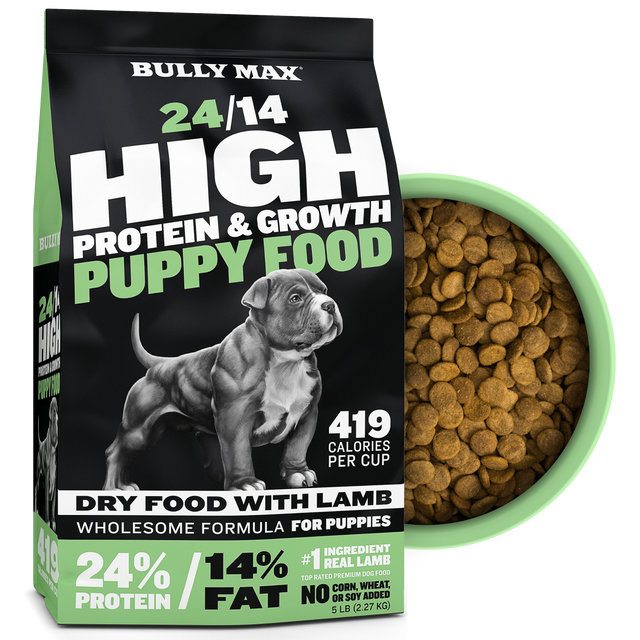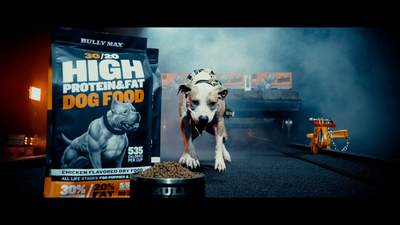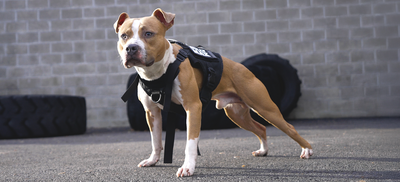Benadryl for Dogs: Uses, Dosage, and Other Tips
Giving Benadryl to your dog: should you do it?
Is it helpful and harmless?
Or is Benadryl for dogs dangerous and a bad idea?
Used properly, in the right situations, Benadryl can be a lifesaver—preventing headaches and alleviating discomfort for your dog.
Before we get started, a disclaimer: it’s always a good idea to talk to your vet about giving medication to your dog. If you can’t make it in for an appointment, try just giving your vet a call to ask their opinion if you’re worried about giving your dog Benadryl.
What Is Benadryl?
Benadryl is a common over-the-counter antihistamine that you can buy at any drug store, pharmacy, or grocery store.
Like other antihistamines, its primary use is to help reduce symptoms associated with allergies, such as sneezing and runny nose.
Keep in mind that Benadryl is the brand name for the active ingredient called diphenhydramine. So even if your store doesn’t sell Benadryl, they almost certainly offer a different brand with the same active ingredient. Check the “Drug Facts” on the back of the label and look for diphenhydramine as the Active Ingredient.
Benadryl for Dogs Uses
Benadryl can be helpful if your dog has any of these symptoms:
- Itchy skin
- Irritated skin
- Nausea
- Car sickness
- Sedatives
- Insomnia
- Anxiety
- Insect or flea bites
- Bee stings
- Reaction to vaccines
- Hay fever, sneezing, or coughing
- Stuffy or runny nose
- Asthma
- Allergies
Can I Give My Dog Benadryl? Is Benadryl Safe for Dogs?
Generally speaking, yes.
Benadryl is a relatively harmless drug that should be totally safe for your dog.
But there are a few caveats:
Benadryl might not be safe for puppies. If your dog is a little pup, ask your vet first. Just as you have to be careful giving medications to human babies, you have to be careful with what you give a puppy. They’re small and may not have fully developed
Avoid combination Cold/Sinus medications. Diphenhydramine is safe for dogs—but many of the other cold and sinus ingredients (including fever reducers, decongestants, and expectorants) may not be. Make sure diphenhydramine is the ONLY active ingredient listed on the label.
Steer clear of liquid Benadryl. In liquid form, Benadryl has a high alcohol content that will be unsafe for your pet.
It’s counter-indicated with some conditions. If your dog has prostatic disease, glaucoma, cardiovascular disease, or hyperthyroidism, definitely check with your vet to make sure Benadryl is safe for your pet.
Watch for formulas containing sodium. Some Benadryl formulas (such as children’s versions) contain sodium, which could be problematic for dogs with certain health conditions who are taking medications. To be on the safe side, look for a form of Benadryl that does not contain sodium.
Do not exceed the recommended dosage. More details on this below.
Benadryl for Dogs: Dosage by Weight
How much Benadryl can you give a dog?
The amount of Benadryl your dog needs depends on its size.
The easy (and less precise) way to determine this is to put your dog into one of three categories:
- 30 lbs and smaller – give 10 mg per dose
- 30-50 lbs – give 25 mg per dose
- 50 lbs and over – give 50 mg per dose
That should give you a fairly accurate dosage.
According to the Merck Veterinary Manual, the standard dose for Benadryl is 2-4 milligrams per kilogram of body weight or 0.9-1.8 milligrams (mg) of Benadryl per pound.
Therefore, a simple and practical dose is 1 mg of Benadryl per pound of your dog’s weight, given 2-3 times a day. For example, a 10-pound dog might receive a 10 mg dose in the morning, afternoon, and evening.
Most diphenhydramine (Benadryl) tablets are 25 mg, which would be the appropriate size for a 25-pound dog. Smaller dogs will require you to cut or divide these 25-mg pills. In this case, children’s Benadryl in the chewable tablets may be a good option. These come in dosages of 12.5 mg.
How Long does Benadryl Take to Work in Dogs?
Benadryl absorbs very quickly and usually begins to take effect after about 30 minutes.
Side Effects of Benadryl
Being a safe medication, Benadryl’s side effects are on the mild side.
The most commonly reported side effect is drowsiness. This is so common that many people give Benadryl to their dogs to help them calm down. (Diphenhydramine is even marketed and used as a sleep-aid by many people.)
The second most common side effect is mild disorientation. We recommend paying attention to your dog’s behavior after giving them Benadryl to make sure they don’t experience this before giving them a second dose.
Other, less common side effects include:
- Dry mouth
- Breathing problems
- Diarrhea
- Lack of appetite
- Vomiting
- Agitation
- Rapid heartbeat
- Urinary retention (not peeing)
If you think your dog is experiencing any of these side effects, give your vet a call.
Tips for Giving Benadryl to Your Dog
Test it first. Instead of giving your dog a full dose right off the bat, try giving them a small amount of Benadryl and waiting for a few hours. Watch your dog for any signs of side effects or reactions.
Always give it with food. One way to avoid some of Benadryl’s side effects (such as nausea and lack of appetite) is to give it to your dog with a meal or a dog treat. Bully Max High-Performance, high calorie dog food is good for this.
Break up tablets and put it into a piece of meat. Most dogs are less than eager to swallow a whole pill. But if you break the pill up into chunks and place them inside a piece of meat, your dog will wolf it down without ever knowing there was a pill inside.
Mix liquid gel Benadryl with wet food. If you have a liquid gelcap, try breaking it open and mixing it with some wet food containing gravy. Your dog will never taste the Benadryl (and they’ll love the gravy).









123 comments
Children’s liquid as opposed to the regular liquid,typically doesn’t have the alcohol, but certainly check the labels 1st.
I don’t like to tell people that disagree with me that I’ve got a Masters in Chemistry and currently in Medical school at the University of British Columbia. I’m not trying to tell them I’m right because I’ve got a degree, in fact I think this institution is an indoctrination mill, I’ve just got to smile and nod until I have my PhD, then I can tell people what I think as a professional. However I will tell people that do agree with what I’ve said that I have a Masters in Chem.
Having said that I will tell you what I’ve seen in the field of science over the past 15 years. Peer review is a joke. I’ll scratch your back if you scratch mine type thing. No serious consideration of anything goes into those. Then there is research. Try obtaining a research grant to research the effects of vaccinations on people and animals. It’s just like trying to get the funds to look into alternate causes of climate change, you will not get it. If your research goes against the status-quo, or risks big oil, bit pharma, or a big corporations bottom line, you won’t get funding. A friend of mine wanted to research the effects of “Oxybenone” on people and the effect it has the oceans, lakes and rivers. No such luck. They did get private funding, but the research was largely ignored. Science has become like religion in a lot of ways, and there a lot of traditional people of science that don’t want to see it go the way of “this is the way it is because I say so” They have started calling people “Deniers” which is too bad. Nobody is denying anything, we are merely skeptical. One of the main tenets of science is scepticism. Carl Sagan said “All scientists should be skeptics. True skepticism is the self-correcting machinery of science” So of course some vaccines are necessary, but people aren’t reading my comment correctly. I did say that I believed that vaccines had “a lot to do” with allergies and that I believe that they are overused. I didn’t say they are the absolute 100% main cause of allergies, in fact I don’t believe in any absolutes except for the fact that I will die one day. Over use of anything, including drinking water, is harmful. The media will never tell you the truth behind the chemicals out there that we as humans, and now our pets are exposed to, and the eventual side effects. Did you know that processed meats are a group 1 carcinogen? Probably not, but they are, and are in the same group as tobacco and asbestos. What about Fluoride? I handle it in the lab every now and then and it says right on the container in the MSDS “do not let it come into contact with skin or eyes, toxic if ingested” I am very concentrated forms of Fluoride, but still, people will say “well they only put a little in the water” which to me is like saying, “well just a little Anthrax will be ok” I don’t care if it is put into the water in small amounts below the LD50 mark, it is poison and it’s side effects amount to cornucopia of different things. Don’t even get me started on the effects of the constant and sudden barrage of electromagnetic radiation that we are all involuntarily bathed in on a daily basis. I’m talking about wifi. This isn’t a conspiracy. Take a physics class, make it to the part on electromagnetic radiation. Actually, just go into your iphone and read the safety message. It will get to the part about how many side effects are possible if you hold the phone to close to your head for extended periods, or if you carry it in your pocket. So when it comes to vaccinations, considering the things you are not being told, and the fact that you may not understand if you were told (informed consent) maybe a little caution should be in the cards.
Sometimes I don’t believe people can be fully informed without having obtained a degree in said field. How are you supposed to explain in 5 minutes what someone has learned in 7-10 years, it is my opinion that in some cases it can be impossible, in others, daunting to say the least.
Addendum… Oxybenzone is one of the main ingredients in sunscreen.
Article says 50 mg for dogs 50 lbs. or more. I have a 60 lb. dog who has suddenly developed itchy skin. I give him 25 mg every 6-8 hours. That seems to be working.
My vet told me to only use dye-free Benadryl.